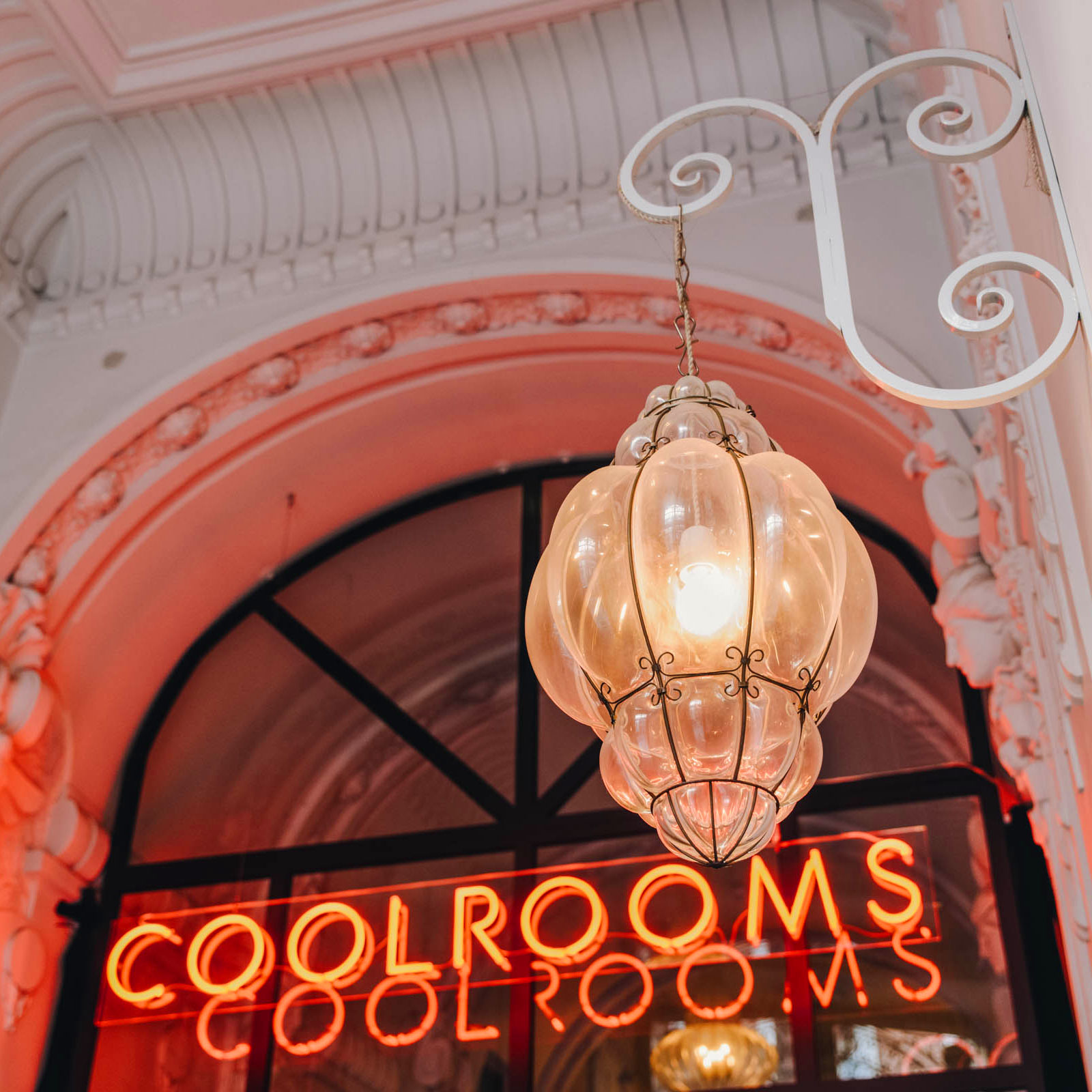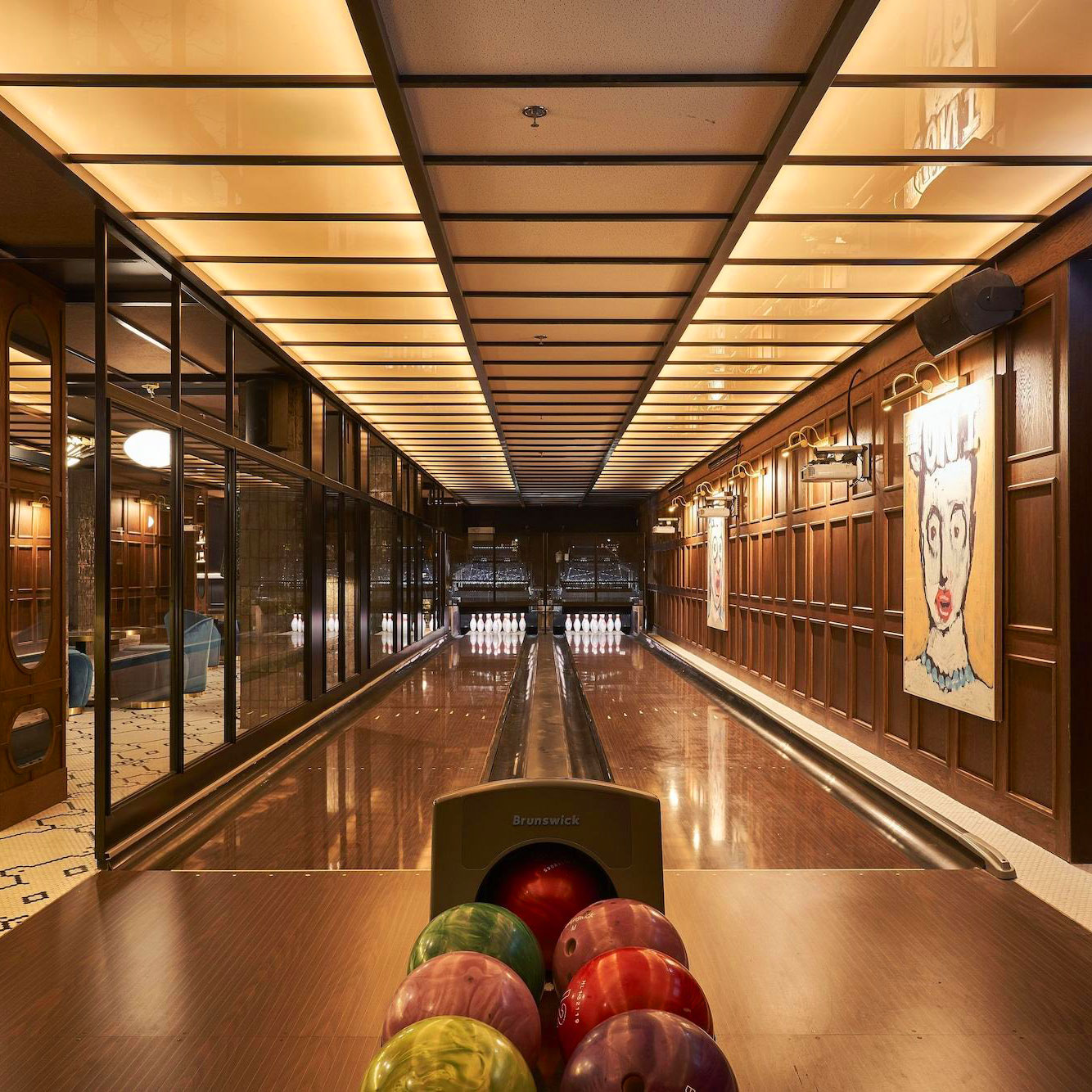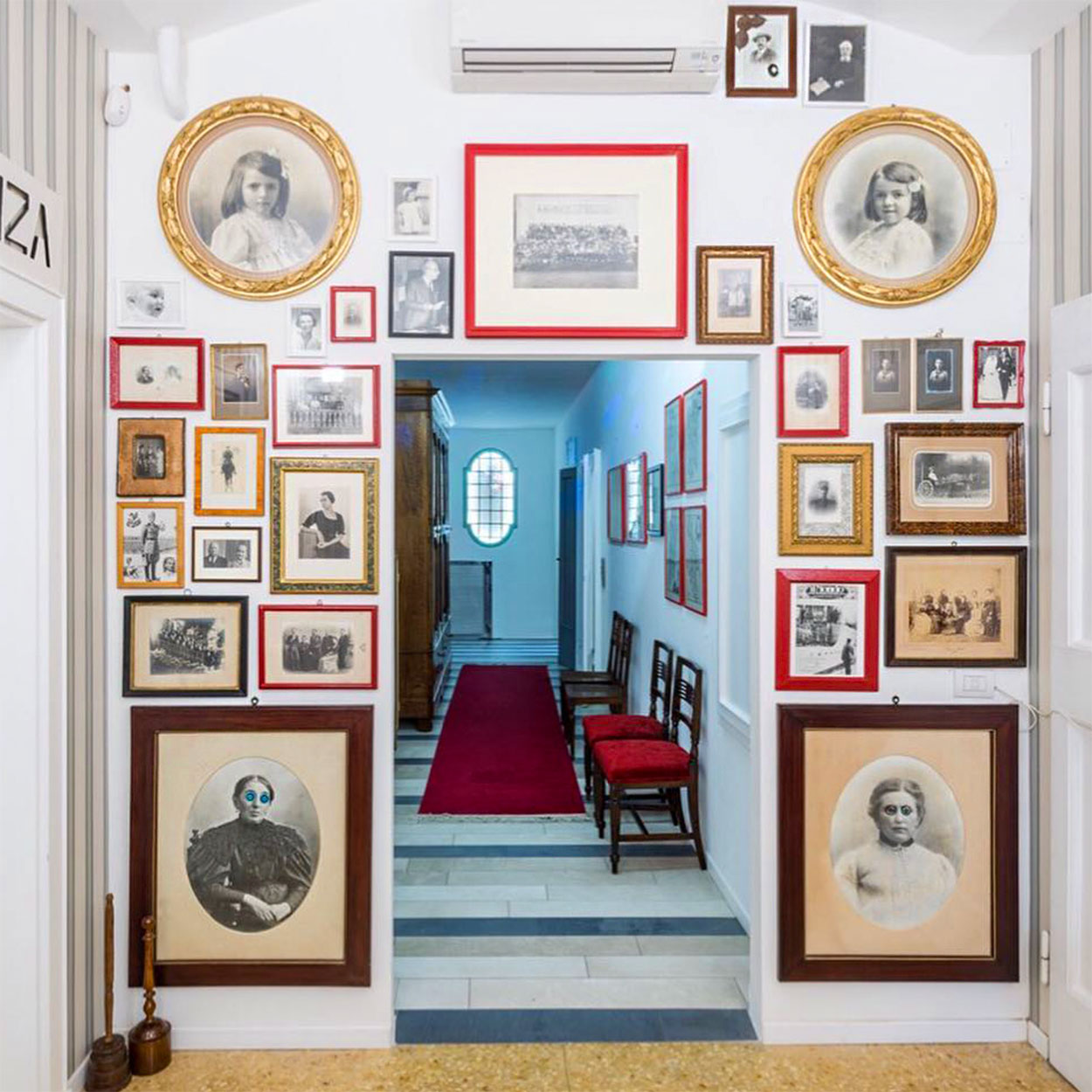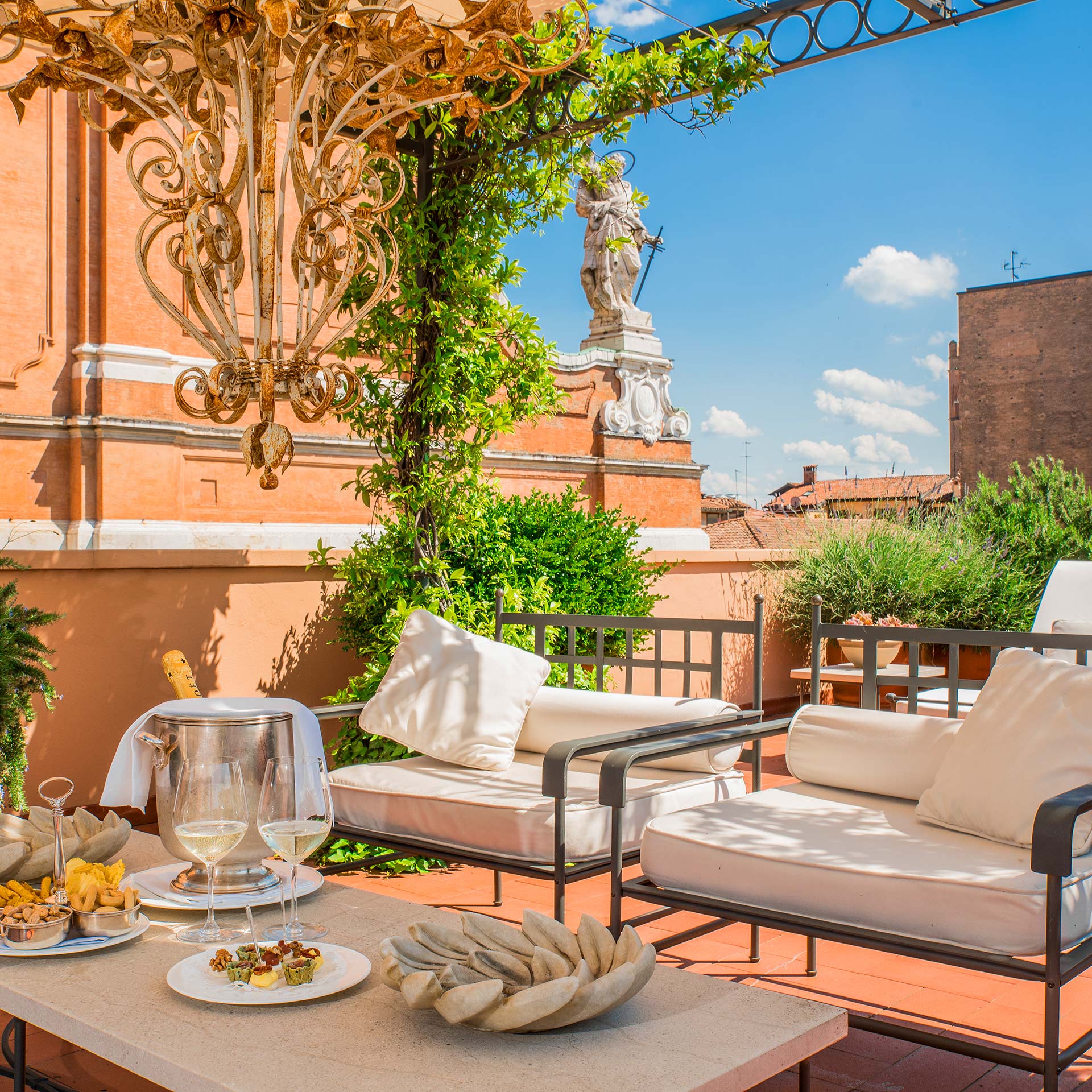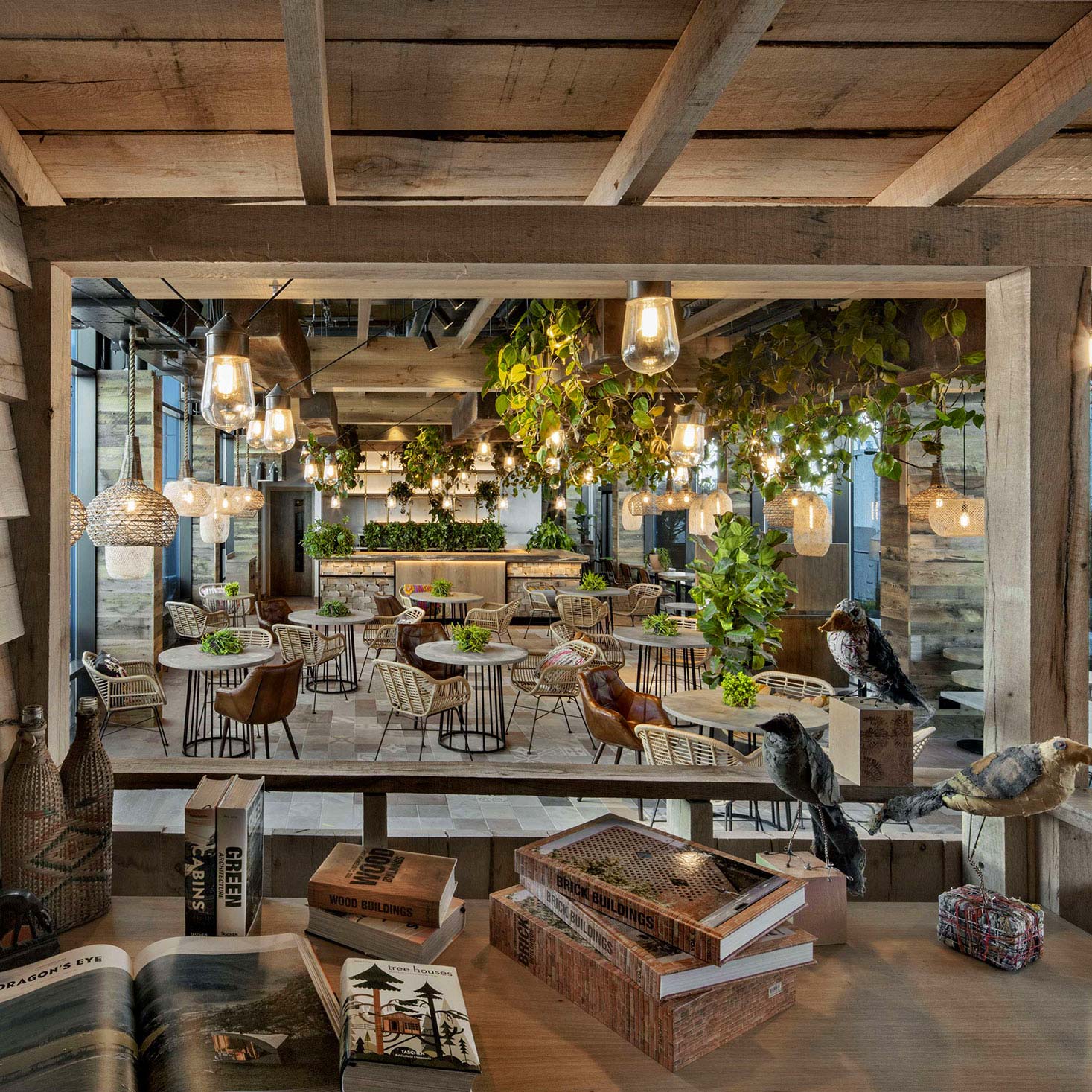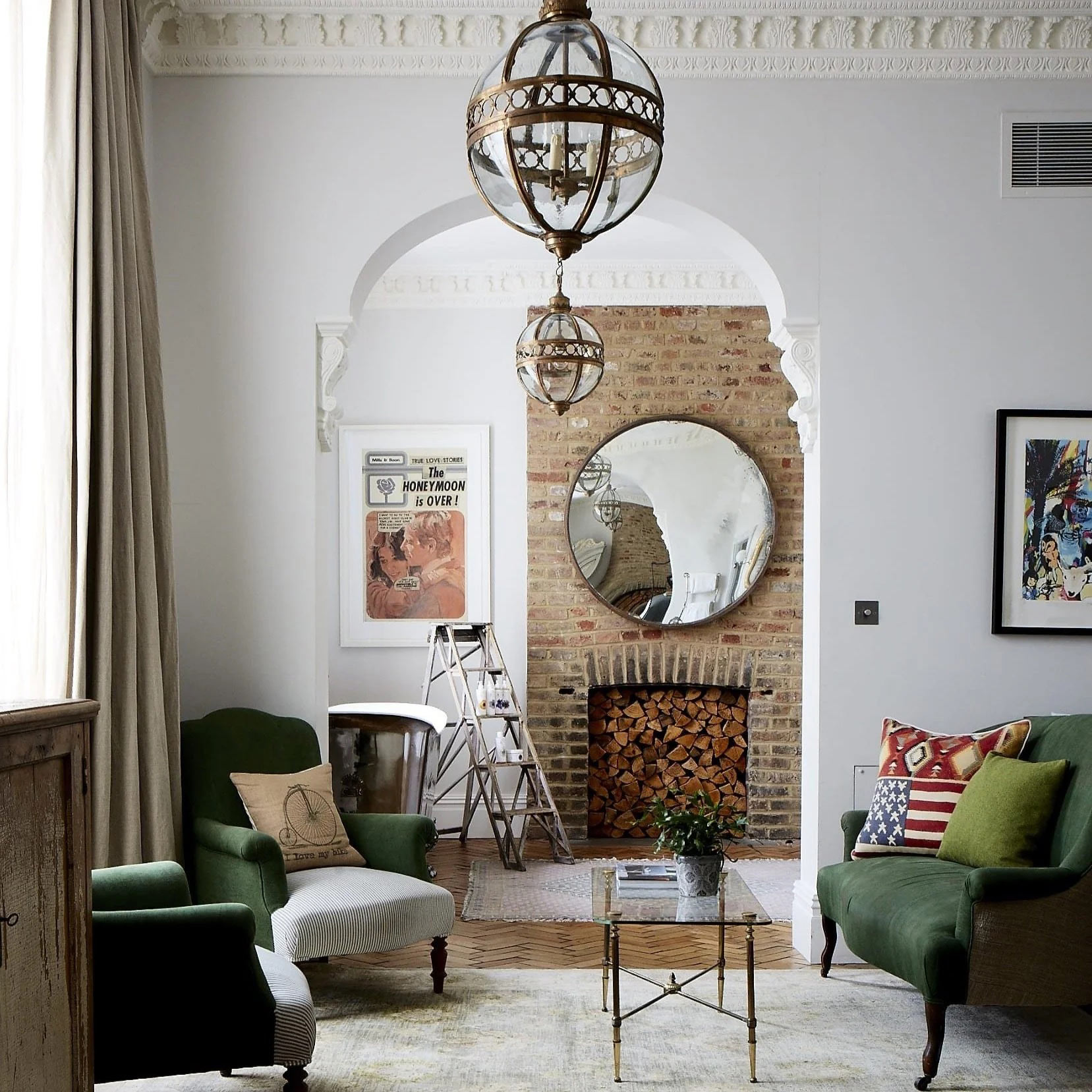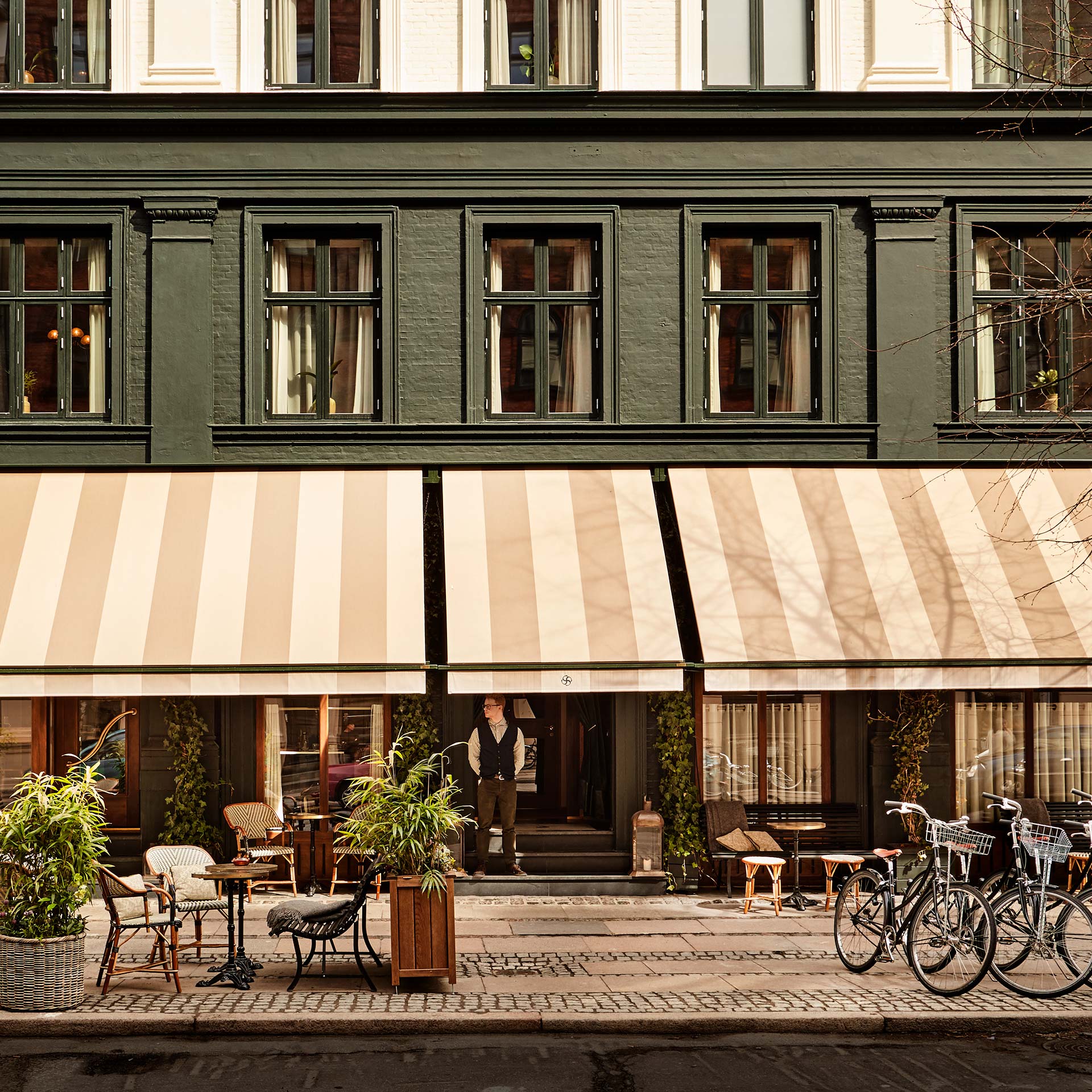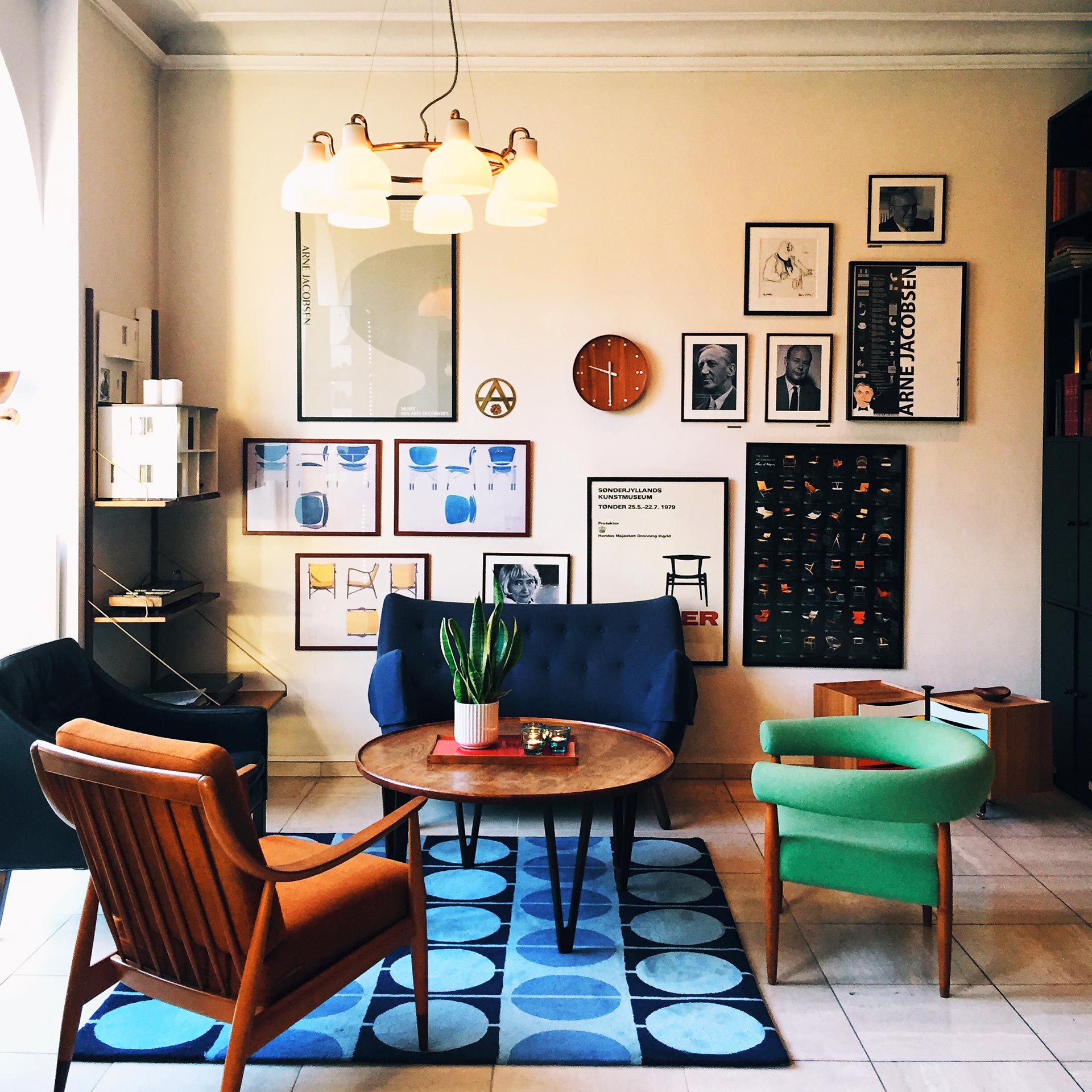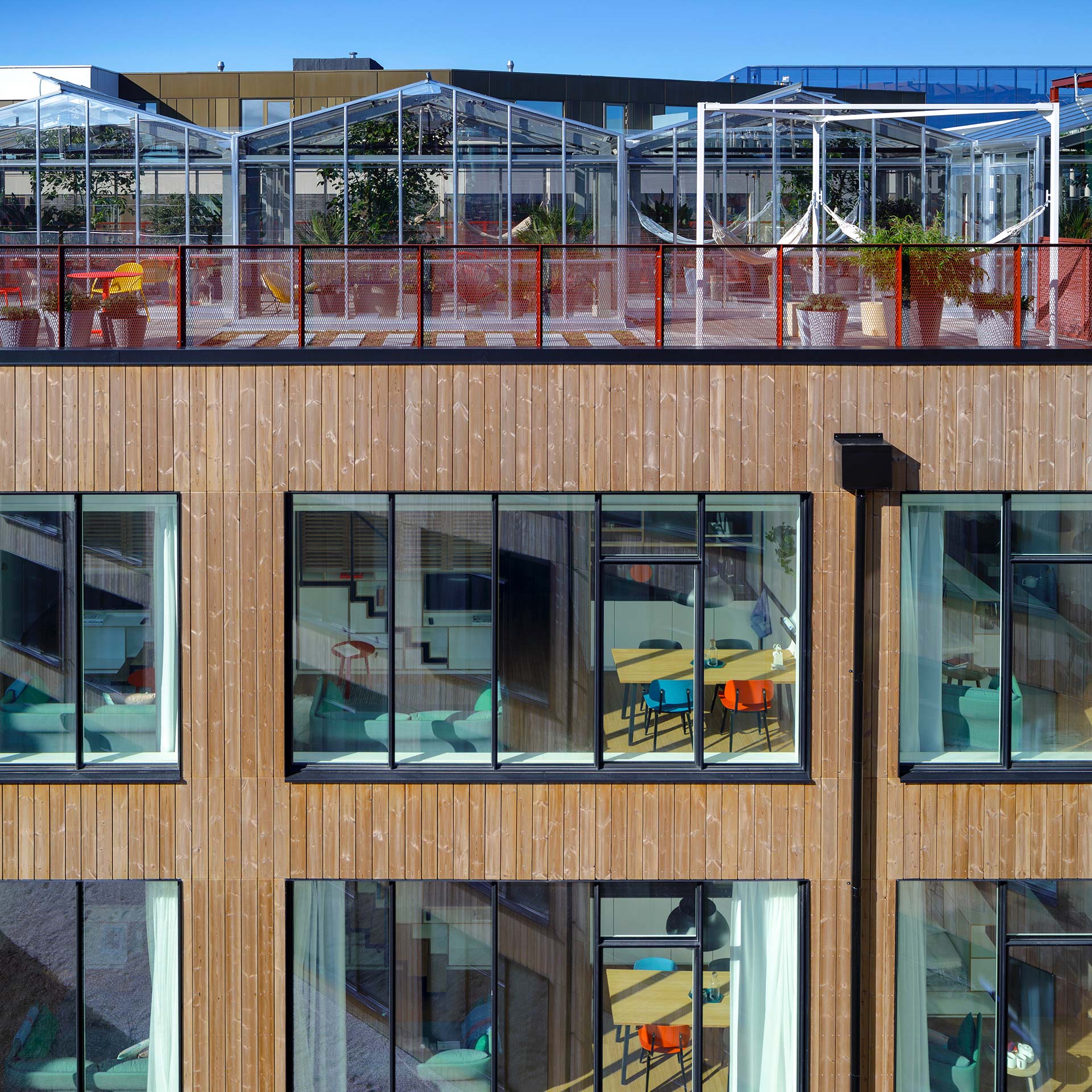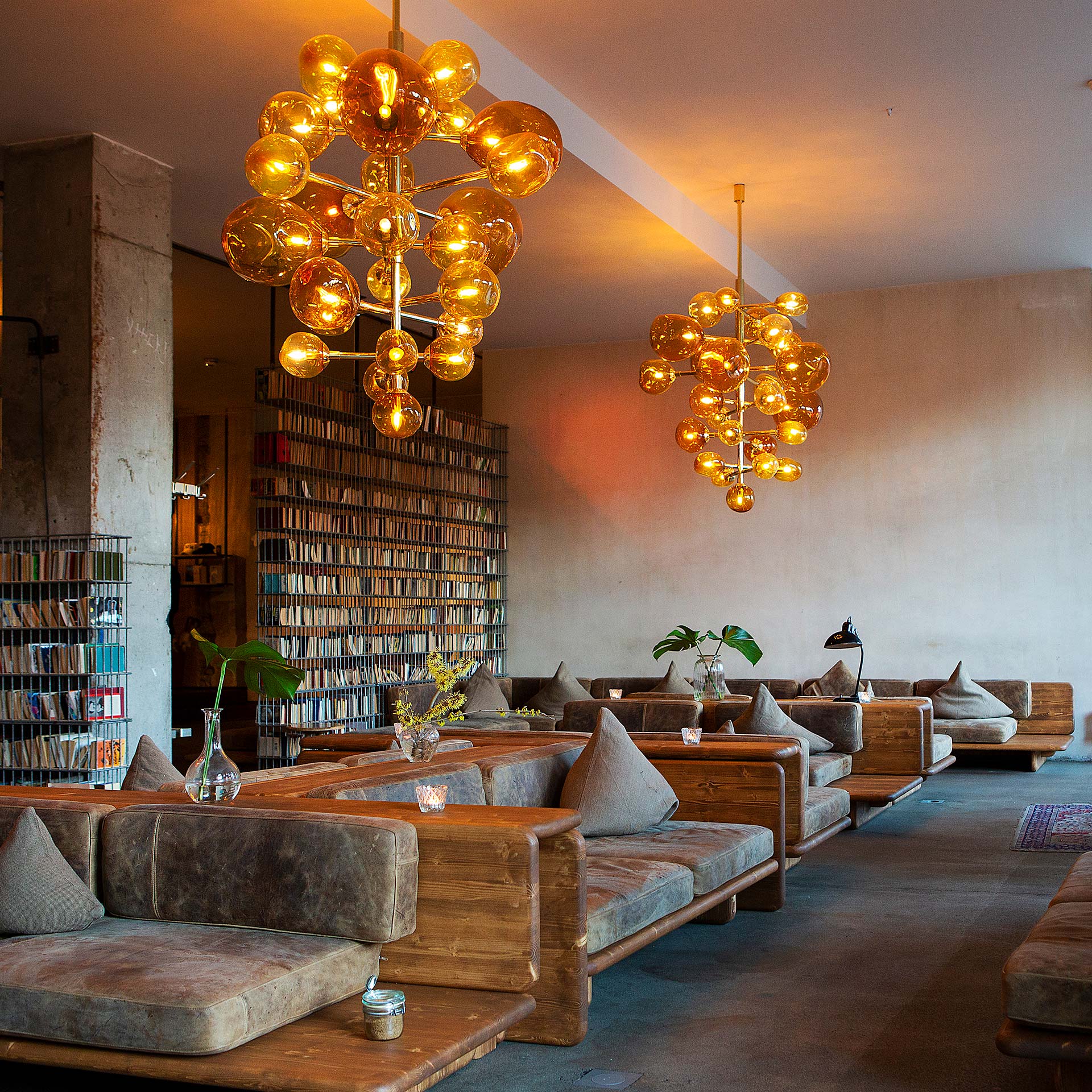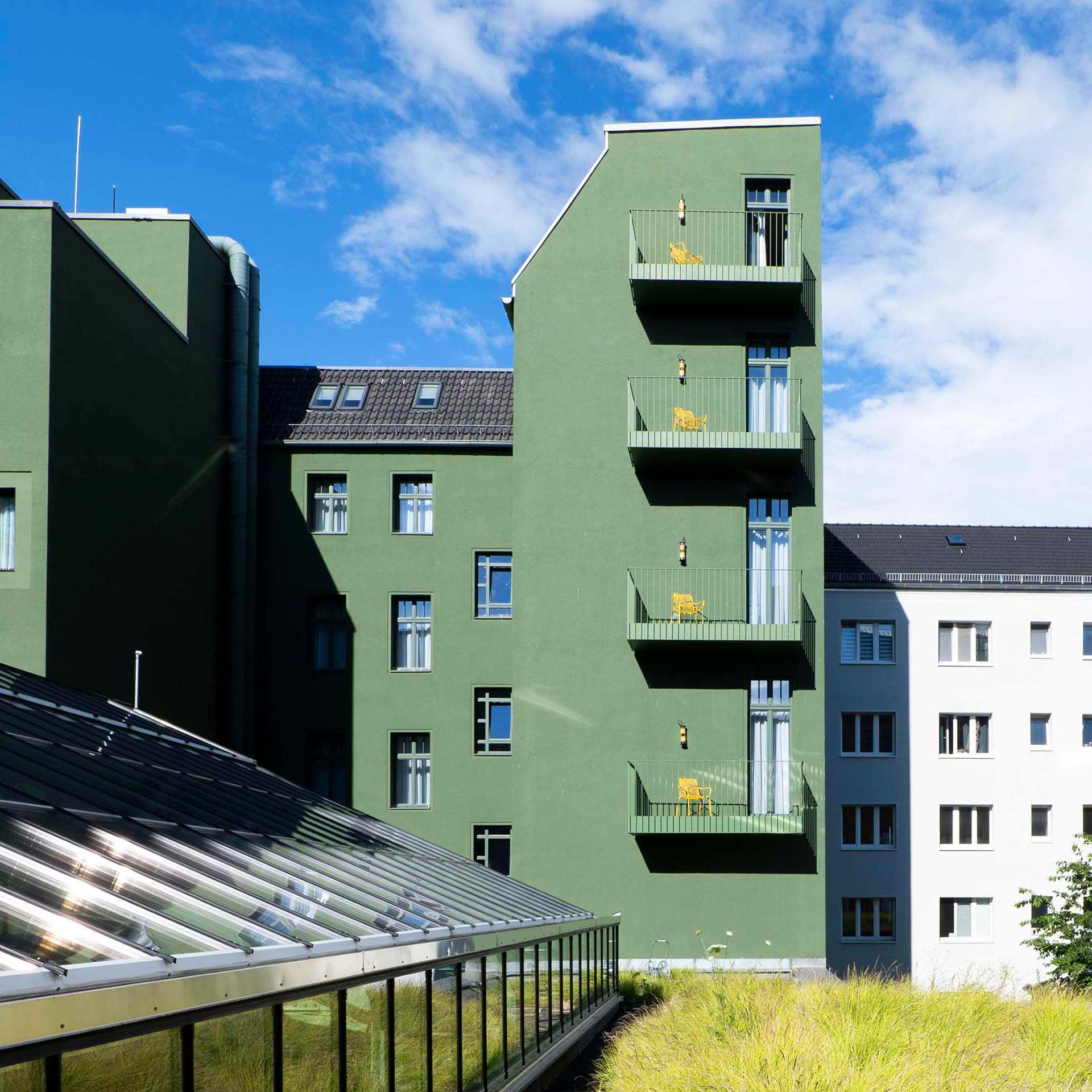
Move over Oasis. Radiohead just announced their first tour in years, playing five cities in Europe. If you’re going, we’ve got a list of hotels where a true fan might want to stay.
By Mark Fedeli
Marketing and Editorial Director, Tablet Hotels
Oasis this. Oasis that. With their much-hyped reunion tour, the lads from Manchester have eaten up all the oxygen in the room lately. But like that meme with the boyfriend looking back at another girl, a new tour from Radiohead is now getting our attention. In November and December 2025, the band will play five European cities: Madrid, Bologna, London, Copenhagen, and Berlin. In the list below, we’ll identify some hotels in those places we think are appropriate for true Radiohead fans.
Speaking of true fans, these next paragraphs are for you. Or, skip down to the hotels.
Tablet die hards know well my affection for R.E.M. We’ve done three separate stories related to the band, the latter two in collaboration with the boys themselves. My fandom for Radiohead isn’t far behind. I was fortunate enough to see them on their earliest tours; I’ll never forget taking the Speedline to Philadelphia in 1995 to see their first tour for The Bends at the tiny TLA on South Street. We had two extra tickets and offered them to some other kids we met on the train. They scoffed. “No thanks. Are they just going to play Creep over and over again?”
Little did they know. The Bends was slow to catch on in the States, but it made clear that Radiohead were to be taken seriously. A couple years later, shortly after OK Computer was released, they’d become one of the most influential and respected bands on the planet. When I’d heard that album get a shout-out on The Roots’ landmark 1999 release Things Fall Apart, I knew my favorite group had made it.

Seeing Radiohead again in Philadelphia at the Electric Factory in 1997, I got to meet Thom Yorke after the show for a minute, and asked him to confirm the rumors about an upcoming collaboration with DJ Shadow. He did (the eventual “Rabbit in Your Headlights”), then scurried onto their bus. I can briefly be seen in the Meeting People is Easy documentary, right after the Philadelphia show where the sublimely bored singer hands “Creep” duties to the crowd.
The show I remember most from those 90’s Radiohead concerts was at Radio City Music Hall near the end of the OK Computer tour. Some months earlier we’d waited anxiously at the Ticketmaster booth at a department store in South Jersey, hoping to score tickets the old fashioned way: in person, at 10am sharp, behind the bedding aisle of a Boscov’s in a suburban mall.
The seats we lucked into were in the first row of the balcony, which was perfect. I leaned forward over the railing all night, a clear view straight down to the band, absolutely hypnotized by hearing “Big Ideas” for the first time, the song that eventually became “Nude” (in an interview that night with MTV’s Matt Pinfield, Thom claimed the working title was “Failure to Receive Repayment Will Put Your House at Risk”).

There were other shows after that, but Radiohead became a juggernaut in the aughts, and for me, some of the charm of seeing them live had worn off. It’s a particularly Gen X trait I suppose, one we’re unsure whether or not to be proud of: the disappointment when our favorite artists, whom we support from the beginning, achieve extraordinary levels of popularity. The problem isn’t with “selling out” — even though we all watched how Fugazi went about their business and wondered why everyone couldn’t just do that — it’s the feeling that we’ve lost a unique part of ourselves. How can something continue to define me if it now defines everyone?
Then you grow up and you realize, not necessarily that you were wrong, but that there are too many other things in life to worry about, and that simply appreciating the music is what matters most. Which brings us to Radiohead’s latest tour. If you’re planning to attend, these are some hotels in which you should consider staying. Like the band, there’s a little bit of everything on display, from the operatic, traditionally arranged anthems of their early years to the cutting-edge, avant-garde approaches of later albums. Whatever the style, it’s all supremely tasteful.
CoolRooms Palacio de Atocha
Madrid, Spain
The sumptuous interiors of this hotel in the heart of Madrid reveal its origins as a 19th-century palace-house, from the richly decorated molded walls and ceilings to the bright and spacious rooms and suites. Add the name of its neighborhood and that of its locally headquartered parent company and you’ve got the full title: CoolRooms Palacio de Atocha. And cool they are — with a touch of historically informed elegance as well.
Brach Madrid
Madrid, Spain
Brach Madrid, a five-star hotel designed by Philippe Starck, offers next-level luxury. The building itself was completed in 1922, initially housing a stylish café-bar on the street level and various designer ateliers on the upper floors. Rich material for Starck’s artistic re-imaginings — and he’s made the most of the building’s history, borrowing inspiration from its original style and function to create a hotel that’s glamorous and modern.
BLESS Hotel Madrid
Madrid, Spain
Even against the backdrop of the regal city of Madrid, the upscale Salamanca district stands out. And it sets the scene for a hotel that’s no less elegant. Hotel Bless is a luxury boutique hotel of modern vintage, but its eclectic style isn’t purely modern — instead it’s an inspiring blend of contemporary design and historically-minded architecture and décor. It’s unusual for a luxury hotel to be quite so stylish.
Casa Bertagni
Bologna, Italy
Two generations ago, Casa Bertagni was a private residence; today, still family-owned, it’s open to the public as an eclectic six-room guest house, and is one of the most unusual small lodgings in Bologna. Its location, right by the university, lends it an intellectual air, and each of its rooms is named for a virtue, from Justice to Charity to Hope. Each one is unique, and all are designed with a richness and depth that rewards close inspection.
Grand Hotel Majestic già Baglioni
Bologna, Italy
Set in an 18th-century palazzo in Bologna’s historic center, the Grand Hotel Majestic già Baglioni is the grand dame of the city’s hotel scene. It’s the oldest in town, with a storied past on proud display — remains of an ancient Roman road are visible in the cellar, intricately painted frescoes depicting European history adorn the restaurant’s curved ceilings, and an elegant red-carpeted staircase connects four levels lined in white marble.
Casa Maria Luigia
Modena, Italy
You’ll have to sleep a bit outside the city for this one, but it’s worth it: a country-house hotel by award-winning chef Massimo Bottura. It’s a compelling culinary destination, obviously; less self-evident is that it’s also an impressive lodging. With a mere 12 rooms Casa Maria Luigia is intimate, but it’s far from sleepy, thanks to lively boutique-style interior design and a quality collection of modern furniture and contemporary art.
Treehouse Hotel London
London, UK
The English-born cousin to America’s eco-boutique 1 Hotels, Treehouse London begins with an advantageous position: just off Regent Street, close to the capital’s busiest shopping district. In its rooms and suites it’s an eclectic mix of raw concrete, warm wooden surfaces, living greenery, and ultra-British coziness, complete with stuffed Paddington bears, well-thumbed books, and a yellow raincoat in every closet.
Artist Residence London
London, UK
Artist Residence London is a throwback to the days when creative people could live well in West London without substantial family wealth. The setting, on a side street in Pimlico, places it close to Sloane Square, Buckingham Palace, and Tate Britain — and even closer to any number of art galleries, both large and small. The rooms are full of character, and full of art — as is Cambridge Street, a multi-purpose dining venue.
Henrietta Experimental
London, UK
The Experimental Cocktail Club has bars by that name in Paris, New York, and London, as well as a couple of excellent Parisian boutique hotels and some highly regarded London restaurants. And now they’ve added the Henrietta Hotel and its restaurant Henri to their portfolio. The hotel has reimagined two Covent Garden townhouses, one of which used to be the home of Victor Gollancz Ltd., publisher of George Orwell and John Le Carré.
Hotel Sanders
Copenhagen, Denmark
The Hotel Sanders is a a 54-room luxury boutique hotel owned and operated by the celebrated Danish ballet dancer Alexander Kølpin. In 2017 the London-based design team Lind + Almond transformed this 1869 building into something that’s both cozy and modernist, both contemporary and nostalgic, blending lush comforts with moody atmospherics and everywhere embellishing the impeccably stylish spaces with little visual surprises.
Hotel Alexandra
Copenhagen, Denmark
The term “design hotel” gets thrown around a lot, but rarely is it applied to a century-old building whose interiors seem to have crystallized sometime around 1955. Copenhagen’s Hotel Alexandra is a time capsule; it’s as if someone fed the pages of a textbook on original mid-century Danish design into a 3-D printer and out popped its guest rooms, culminating in a series of thoroughly realized homages to several of the great Danish furniture designers.
Zoku Copenhagen
Copenhagen, Denmark
The hybrid home-office lofts and everything-in-its-place efficiency of Zoku Copenhagen aim to provide a stylish residential work-life experience for travelers in town for days, weeks, or more. It’s set in Amager Vest, an up-and-coming district on the island just to the south of the city center. And its accommodations, sensibly, are geared toward the kind of creative work that takes place here — and to the youthful leisure travelers who gravitate here.
Michelberger Hotel
Berlin, Germany
Time and again we’ve seen stylish hotels pitch themselves to the creative class, and then price themselves too high for their intended audience to afford. It’s even more important in Berlin — a town whose much-vaunted hipness has everything to do with its relatively modest cost of living — that the hip hotels make allowances for guests with more taste than cash. Enter the Michelberger, where bankers and lawyers are by no means excluded, but neither is anyone else.
sly Berlin
Berlin, Germany
Sly Berlin stakes out a corner of Friedrichshain that’s rapidly evolving. This spot, closer to Volkspark Friedrichshain than to the Spree, is close to the heart of all that’s cool in the so-called New East. The 150 rooms are as stylish as you’d expect, and perhaps warmer and more richly figured; parquet floors and classic design pieces share space with Marshall bluetooth speakers. The hotel features a Späti, or the Berlin version of an all-night convenience store.
Gorki Apartments
Berlin, Germany
Put simply, it’s the sort of hotel we’ve been wanting to see from Berlin for a while. Built in a 19th-century residential building in Mitte, the district that’s still right in the mitte of everything that matters in Berlin, the charmingly oddball Gorki Apartments are just what the doctor ordered: a proper hipster hotel without any of the off-putting try-hardness that sinks many a similar effort.

Mark Fedeli is the hotel marketing and editorial director for Tablet and Michelin Guide. He’s been with Tablet since 2006, and he thinks you should subscribe to our newsletter.



